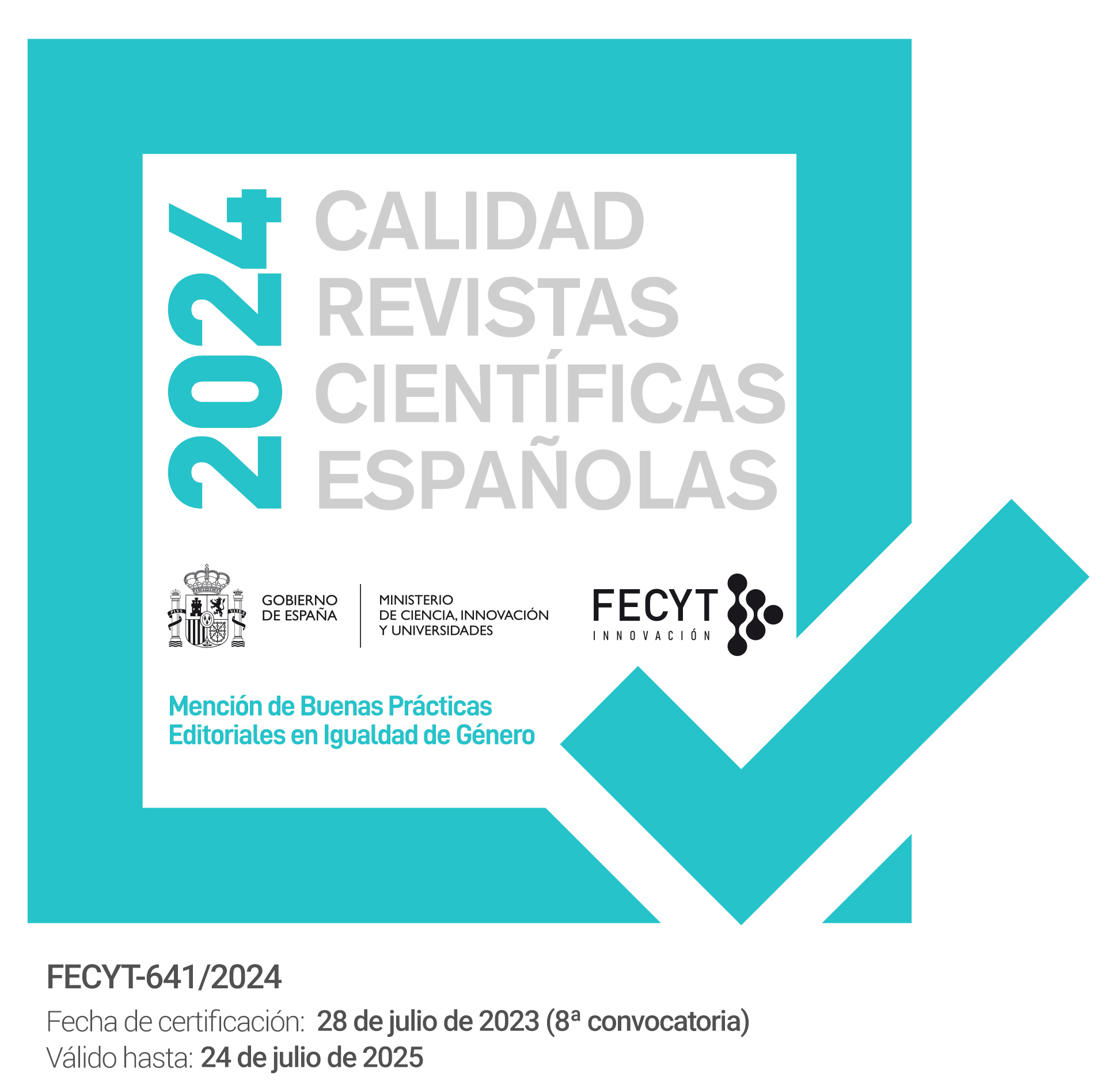Virtual reality and Parkinson's disease: application to motor and verbal improvement of Activities of Daily Living (AVD)
DOI:
https://doi.org/10.12795/PH.2023.v37.i01.06Keywords:
verbal rehabilitation, motor rehabilitation, virtual reality, Parkinson's diseaseAbstract
This paper presents the results of an investigation carried out with virtual reality software to rehabilitate Parkinson's patients in motor and verbal activities of daily living. Objectives: to analyse the verbal improvement of Parkinson's disease patients who underwent a virtual reality programme and to make a comparison with a control group of patients with similar characteristics who did not use it. Methodology: we selected Parkinson's patients with a low-index motor scale (UPDRS), that is, they were not dependent and could perform the exercises proposed by the software. They underwent a language assessment before undergoing virtual reality and another after. Results and conclusions: a discreet verbal improvement is observed in the contexts worked on, which is expected to be much more noticeable if the use of the software mentioned above is extended over time and if the sample of participants is enlarged. The qualitative data offered greater conclusions than the quantitative data.
Downloads
Metrics
No metrics found.
Referencias bibliográficas
Ayora Esteban, M. C. y Paredes Duarte, M. J. (2020). Realidad virtual: aplicaciones para la memoria verbal de algunos trastornos del lenguaje. J. M Alcántara, M. Bermúdez Martínez, F. J. Blanco Encomienda, J. M. Heredia Jiménez (coords.). Propuestas científicas para un desarrollo social. Madrid: Eos Universitaria, 261-268.
Benedet, M. J. (2006). RIENAL. Repertorio de instrumentos para la evaluación neurolingüística de las alteraciones del lenguaje. EOS.
Berardelli, A., Wenning, G. K., Antonini, A., Berg, D., Bloem, B. R., Bonifati, V., Brooks, D., Burn, D. J., Colosimo, C., Fanciulli, A., Ferreira, J., Gasser, T., Grandas, F., Kanovsky, P., Kostic, V., Kulisevsky, J., Oertel, W., Poewe, W., Reese, J. P., Relja, M., … Vidailhet, M. (2013). EFNS/MDS-ES/ENS [corrected] recommendations for the diagnosis of Parkinson’s disease. European journal of neurology, 20(1), 16-34. https://doi.org/10.1111/ene.12022
Collette, F., Hogge, M., Salmon, E., & Van der Linden, M. (2006). Exploration of the neural substrates of executive functioning by functional neuroimagin. Neuroscience, 139(1), 209-221. https://doi.org/10.1016/j.neuroscience.2005.05.035
Cooke, A. (2002). Neural basis for sentence comprehension: Gramatical and short-term memory components. Human Brain Mapping, 15(2), 80-94. https://doi.org/10.1002/hbm.10006
De Renzi, E., & Vignolo, L. (1962). The Token Test: A sensitive test to detect receptive disturbances in aphasics. Brain, 85(4), 665-678. https://doi.org/10.1093/brain/85.4.665
Fahn, S. (2003). Description of Parkinson’s disease as a Clinical Syndrome. Annals of the New York Academy of Sciences, 991(1), 1-14. https://doi.org/10.1111/j.1749-6632.2003.tb07458.x
Friederici, A. D., Kotz, S.A., Werheid, K., Hein, G., & Cramon, D. Y. (2003). Syntactic Comprehension in Parkinson’s disease: Investigating Early Automatic and Late Integrational Processes Using Event-Related Brain Potentials. Neuropsychology, 17(1), 133-142. https://doi.org/10.1037/0894-4105.17.1.133
García, A. M., Carrillo, F., Orozco-Arroyave, J. R., Trujillo, N., Vargas Bonilla, J. F., Fittipaldi, S., Adolfi, F., Nöth, E., Sigman, M., Fernández Slezak, D., Ibáñez, A., & Cecchi, G. A. (2016). How language flows when movements don’t: An automated analysis of spontaneous discourse in Parkinson’s disease. Brain and Language, (162), 19-28. https://doi.org/10.1016/j.bandl.2016.07.008
García, A. M., & Ibáñez, A. (2016). A touch with words: Dynamic synergies between manual actions and language. Neuroscience and Biobehavioral Reviews, (68), 59-95. https://doi.org/10.1016/j.neubiorev.2016.04.022
Grossman, M. (1999). Sentence Processing in Parkinson’s disease. Brain and Cognition, 40(2), 387-413. https://doi.org/10.1006/brcg.1999.1087
Grossman, M., Glosser, G., Kalmanson, J., Morris, J., Stern, M., & Hurtig, H. (2001). Dopamine supports sentence comprehension in Parkinson’s Disease. Journal of the Neurological Sciences, 184(2), 123-130. https://doi.org/10.1016/S0022-510X(00)00491-3
Grossman, M., Cooke, A., Devita, C., Lee, Ch., Alsop, D., Detre, J., Gee, J., Chen, W., Stern, M., & Hurtig, H. (2003). Grammatical and resource components of sentence processing in Parkinson’s disease. Neurology, 60(5), 775-781. https://doi.org/10.1212/01.WNL.0000044398.73241.13
Grossman, M., Kalmanson, J., Bernhardt, N., Morris, J., Stern, M., & Hurtig, H. (2000). Cognitive Resource Limitations during Sentence Comprehension in Parkinson’s Disease. Brain and Language, 73(1), 1-16. https://doi.org/10.1006/brln.2000.2290
Grossman, M., Lee, Ch., Morris, J., Stern, M., & Hurtig, H. (2002). Assessing Resource Demands during Sentence Processing in Parkinson’s Disease. Brain and Language, 80(3), 603-616. https://doi.org/10.1006/brln.2001.2630
Henry, J. D., & Crawford, J. (2004). Verbal fluency déficits in Parkinson’s disease: A meta-analysis. Journal of the International Neuropsychological Society, 10(4), 608-622. https://doi.org/10.1017/S1355617704104141
Kaan, E. & Swaab, T. Y. (2002). The brain circuitry os syntactic comprehension. Trends in Cognitive Sciences, 6(8), 350-356. https://doi.org/10.1016/s1364-6613(02)01947-2
Lee, Ch., Grossman, M., Morris, J., Stern, M., & Hurtig, H. (2003). Attentional resource and processing speed limitations during sentence processing in Parkinson’s disease. Brain and Language, 85(3), 347-356. https://doi.org/10.1016/S0093-934X(03)00063-4
Liberman, A. M., Cooper, F. S., Shankweiler, D. P., & Studdert-Kennedy, M. (1967). Perception of the speech code. Psychological Review, 74(6), 431-461. https://doi.org/10.1037/h0020279
Linares-del Rey, M., Vela Desalojo, L. y Cano de la Rueda, R. (2019). Aplicaciones móviles en la enfermedad de Parkinson: Una revisión sistemática. Neurología: Publicación Oficial de la Sociedad Española de Neurología, 34(1), 38-54. https://doi.org/10.1016/j.nrl.2017.03.006
Mendoza, E., Carballo, G., Muñoz, J. y Fresneda, M.ª D. (2007). Test de Comprensión de Estructuras Gramaticales. TEA/ediciones.
Micheli, F. (2006). Enfermedad de Parkinson y trastornos relacionados. Medica Panamericana.
Mortimer, J. A., Pirozzolo, F. J., Hansch, E. C., & Webster, D. (1982). Relationship of motor symptoms to intellectual deficits in Parkinson disease. Neurology, 32(2), 133-137. https://doi.org/10.1212/WNL.32.2.133
Mota, J. M., Baena-Perez, R., Ruiz-Rube, I., Duarte, M. J. P., Ruiz-Castellanos, A., & Correro-Barquin, J. M. (2021). Spatial Augmented Reality System with functions focused on the rehabilitation of Parkinson’s patients. En A. Balderas, A. J. Mendes y J. M. Dodero (Eds.), 2021 International Symposium on Computers in Education (SIIE). https://doi.org/10.1109/SIIE53363.2021.9583636
Muslimović, D., Post, B., Speelman, J., De Haan, R., & Schmand, B. (2009). Cognitive decline in Parkinson’s disease: A prospective longitudinal study. Journal of the International Neuropsychological Society, 15(3), 426-437. https://doi.org/10.1017/S1355617709090614
Noyce, A. J., Bestwick, J. P., Silveira-Moriyama, L., Hawkes, C. H., Knowles, C. H., Hardy, J., Giovannoni, G., Nageshwaran, S., Osborne, C., Lees, A. J., & Schrag, A. (2014). PREDICT-PD: identifying risk of Parkinson’s disease in the community: methods and baseline results. Journal of neurology, neurosurgery, and psychiatry, 85(1), 31-37. https://doi.org/10.1136/jnnp-2013-305420
Noyce, A. J., R’Bibo, L., Peress, L., Bestwick, J. P., Adams-Carr, K. L., Mencacci, N. E., Hawkes, C. H., Masters, J. M., Wood, N., Hardy, J., Giovannoni, G., Lees, A. J., & Schrag, A. (2017). PREDICT-PD: An online approach to prospectively identify risk indicators of Parkinson’s disease. Movement disorders : official journal of the Movement Disorder Society, 32(2), 219-226. https://doi.org/10.1002/mds.26898
Nutt, J. G., & Wooten, F. (2005). Diagnosis and Initial Management of Parkinson’s disease. The New England journal of medicine, 353(10), 1021-1027. https://doi.org/10.1056/NEJMcp043908
Paredes Duarte, M.ª J. y Espinosa Rosso, R. (2015). Lenguaje y parkinson: aproximación clínica. En F. Díeguez-Vide (Ed.), Temas de lingüística clínica (pp. 29-52). Editorial Horsori.
Paredes Duarte, M. J. y Espinosa Rosso, R. (2020). Alteraciones lingüísticas en la enfermedad de Parkinson. Aproximación estadística a un estudio con variantes. Pragmalingüística [volumen monográfico: Investigaciones de lingüística clínica], (Monográfico 2), 272-286. https://doi.org/10.25267/Pragmalinguistica.2020.iextra2.16
Rodríguez-Ferrero, J. y Cuetos, F. (2010). La comprensión de verbos en los enfermos de Parkinson. Ciencia cognitiva, 4(1), 4-16.
Ruiz Castellanos, A., Rodríguez Palomero, J. y Cabeza de Vaca Carmona, E. (2016). Una terapia de apraxias mediante verbos de movimiento e interacción: Propuesta en contextos naturales y comunicativos. En F. Díeguez-Vide (Ed.), Temas de lingüística clínica (pp. 78-88). Editorial Horsori.
Tedrus, G. M., Fonseca, L. C., Letro, G. H., Souza Bossoni, A., & Samara, A. B. (2009). Dementia and mild cognitive impairment in patients with Parkinson’s disease. Arquivos de Neuro-Psiquiatria, 67(2b), 423-427. https://doi.org/10.1590/S0004-282X2009000300010
Whiting, E., Copland, D., & Angwin, A. (2005). Verb and context processing in Parkinson’s disease. Journal of Neurolinguistics, 18(3), 259-276. https://doi.org/10.1016/j.jneuroling.2004.11.008
Williams-Gray, C. H., Foltynie, T., Lewis, S., & Barker, R. (2006). Cognitive Deficits and Psychosis in Parkinson’s Disease. A Review of Pathophysiology and Therapeutic Options. CNS Drugs, 20(6), 477-505. https://doi.org/10.2165/00023210-200620060-00004
Published
How to Cite
Issue
Section
License
Copyright (c) 2023 María Jesús Paredes Duarte, Berenice Domínguez Cabrera

This work is licensed under a Creative Commons Attribution-NoDerivatives 4.0 International License.
The printed and electronic editions of this Journal are edited by the University of Seville Editorial, and the source must be cited in any partial or total reproduction.
Unless otherwise indicated, all the contents of the electronic edition are distributed under a license of use and distribution “Attribution-NonCommercial-NoDerivatives 4.0 International” . You can view the informative version and the legal text of the license here. This fact must be expressly stated in this way when necessary.
Authors who publish in this journal accept the following conditions:
- The author/s retain copyright and grant the journal the first publication right, and accept it to be distributed with the Creative Commons By NC ND 4.0 licence, which allows third parties to use what is published whenever they mention the authorship of the work and the first publication in this journal and whenever they do not make commercial use and reuse it in the same way.
- Authors can make other independent and additional contractual agreements for the non-exclusive distribution of the article published in this journal (e.g., include it in an institutional repository or publish it in a book) provided they clearly indicate that the work was published for the first time in this journal.
Authors are allowed and recommended, once the article has been published in the journal Philologia Hispalensis (online version), to download the corresponding PDF and disseminate it online (ResearchGate, Academia.edu, etc.) as it may lead to productive scientific exchanges and to a greater and faster dissemination of published work (see The Effect of Open Access).
Accepted 2023-01-26
Published 2023-07-28
- Abstract 340
- HTML (Español (España)) 254
- PDF (Español (España)) 289
- XML (Español (España)) 27












